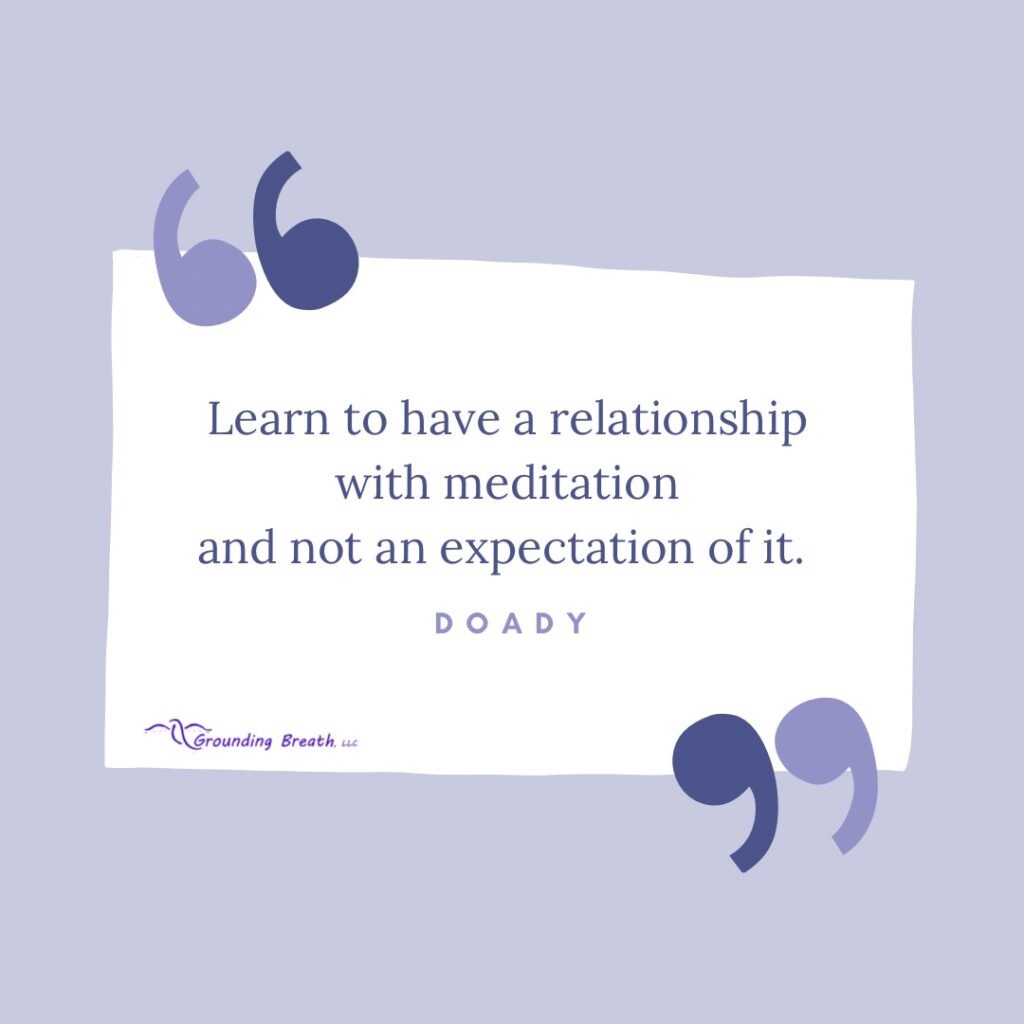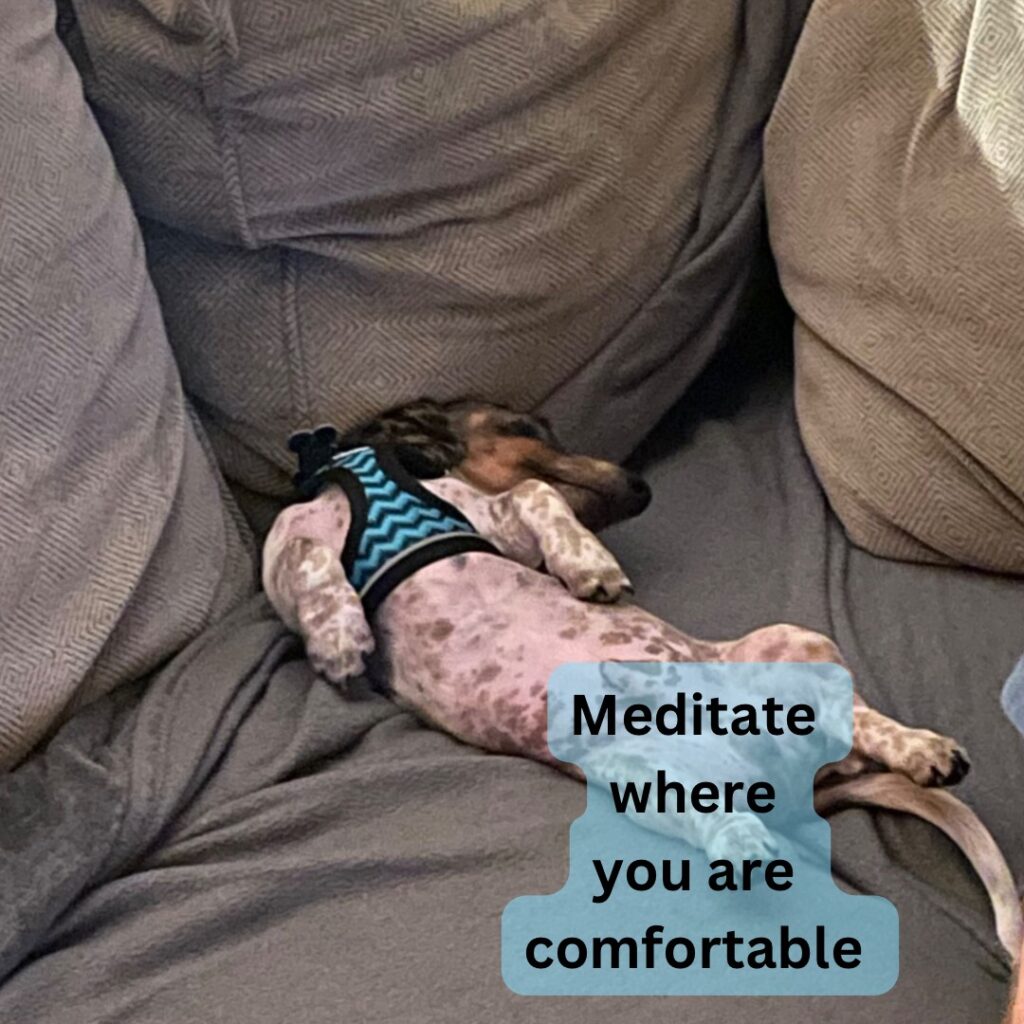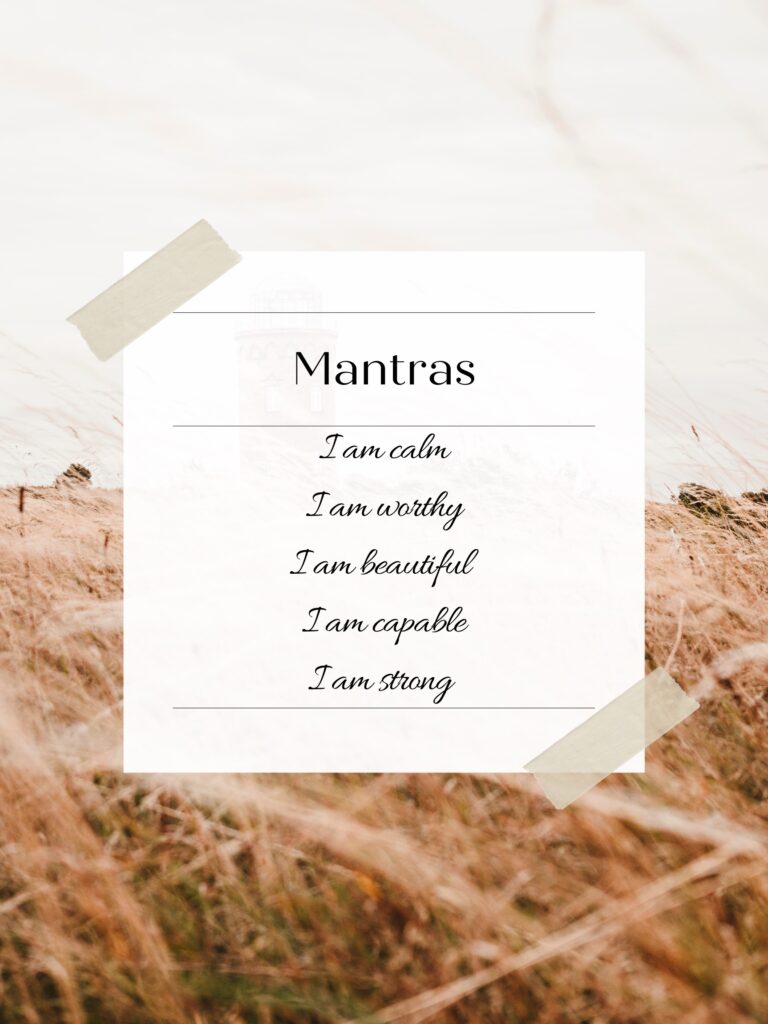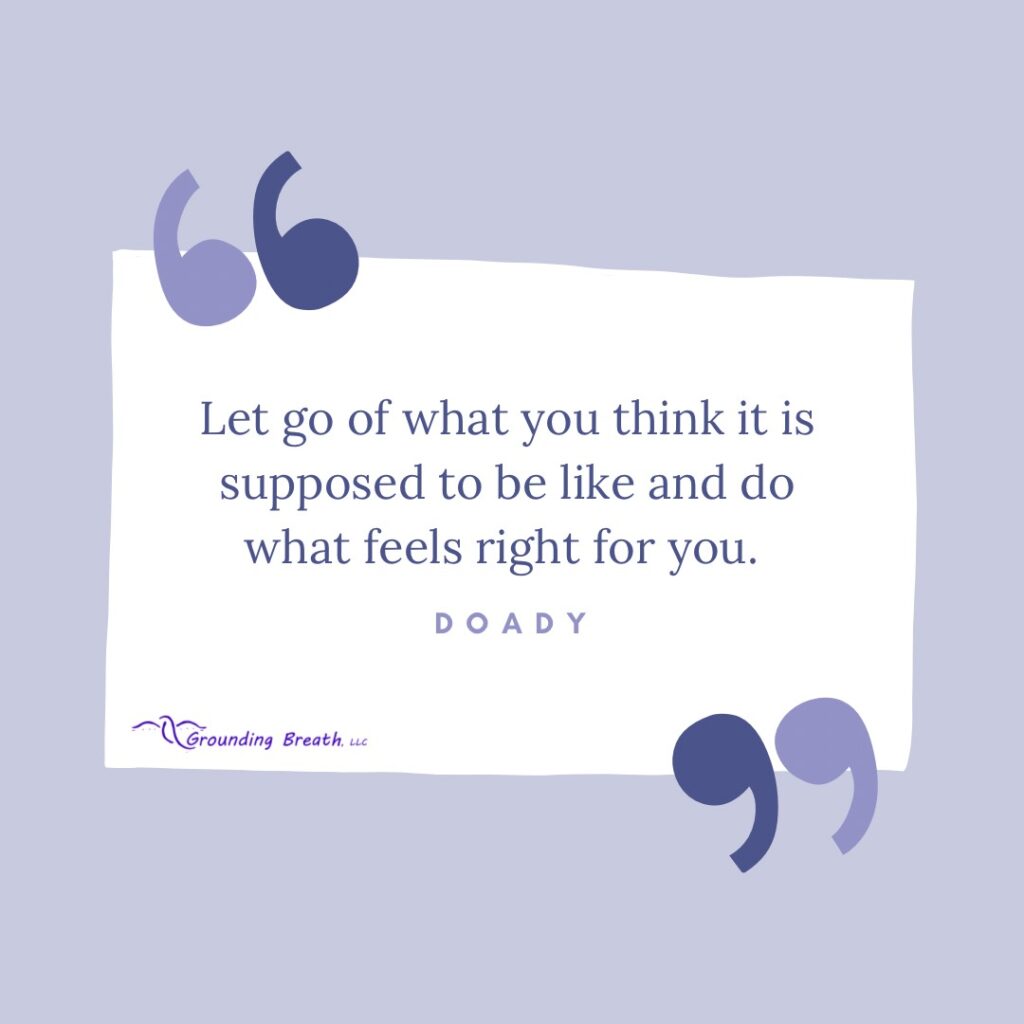Making Meditation Practical
Removing Expectations
If your mind is anything like a Google search on the word meditation, it’s filled with thoughts of monks high on mountain tops, people sitting cross-legged under trees at sunset, or a pristine beach.
Unfortunately, the ideal image alone makes the practice seem unattainable. And with this narrative already started, I imagine it spirals into other justifications for why you think you can’t meditate. Perhaps you feel you don’t have time, a quiet location, or you think you can never “turn your brain off.”
I believe the reason we feel this way, and I say we because this was me once, too, is because it hasn’t been explained well. The issue is in how we interpret words like “turn off” or “empty” your mind, and find a “silent” or “quiet” place. Perhaps you think meditation takes a lot of time.
So let’s break this down for those of us with a job, a family, or other obligations, that feel like there is no time left in the day, let alone “silent” time for “not thinking.”
Meditation Defined
According to dictionary.com, meditate is “to think deeply or focus one’s mind for a period of time.” The thing I would like to point out is that it says to think (deeply). So, hallelujah, you can think!! No more “I can’t turn off my brain” excuses needed.
Part of the practice of meditating is to get a hold of what you think. And, remember, this is a practice, and it does take time.
I like to use the analogy of going to the gym. Most of the time, starting at the gym, we don’t walk in and pick up a 100-pounds to do a bicep curl. Instead, we start with less weight and work our way up. It’s the same with meditation.
When I first started, I woke up to my alarm, went to another room, laid down, and for a while, went back to sleep. I meditated like this for a while. I picked different spots: the floor, the couch, and a chair. The more I practiced and played with it, the more I learned how to have a relationship with it and not an expectation of it.

Why Meditate
To Listen. We spend a lot of time asking, “Why is this happening to me?” We pray and ask for help. We send energy out into the universe, manifesting our heart’s desire. Then we busy ourselves wondering why our prayers aren’t answered, and our dreams aren’t coming true. It’s because we forget to listen.
We need the time to slow down and pay attention to the responses. This is why I love sound baths so much. They help with slowing down and listening. Once you get a feel for it, it’s easier to do independently. You find clarity.
With practice, you begin to trust the answers that come to you. This is how you build your relationship with yourself and your higher beliefs.
What’s your Quiet
Quiet does not mean complete silence. Sound is everywhere. Even in the best soundproof room, there is sound: your breath, digestive system, heartbeat, etc. Sound is something to embrace. It’s part of the world we live in.
Quiet is different for each person and varies from day to day. Sometimes it’s not practical to wait for a moment when there won’t be many sounds. But, when you’re starting, it might make you more comfortable to have a little symphony of the sounds of your life in the background.
If I were to sit outside, I would hear birds, the wind in the grass and trees, and on some days, heavy equipment, the squeak of a neighboring oil pump, lawnmowers, dogs barking, airplanes, and trucks going by. These sounds are part of my world. This would be my quiet.
Some of you could add in children playing, big city noises, trains, and so on. The point is to know that these sounds are ok. Instead of fighting them, accept them as part of the meditation and move on.
I performed a sound bath not too long ago at a public park, and of course, they were mowing that morning. So I guided the participants to allow the sound. Then, I asked them to take a few minutes to listen to it. How far away is it? Can you hear the difference when he turns? After a few minutes, it became part of the backdrop of the sound bath, and most people forgot it was there.
Embrace the moment
So, maybe your quiet involves a TV or children playing in another room. That’s ok. If the sounds around you are too distracting, you can try headphones with gentle music or brown noise. Attempt to dull the sound by closing a door but by all means, don’t fight it.
My children were not quiet when I wanted them to be, but their voices playing in the other room was a lovely backdrop. And, yes, they may interrupt, but be kind. Try again. It’s ok.
The idea is to embrace the moments you’ve been given to practice meditating however they present. Be nice to yourself; if it doesn’t work out, let it go and try again later.
Thoughts on Thinking
You can start with controlling your active thoughts. These are thoughts that involve critical thinking, like judgment or expectation.
When you begin to meditate, you may find yourself thinking about something you’re going to buy, something you need to get done, or a conversation you had with someone. These are your regular active thoughts.
So, we start by continuing to think actively, but we switch it to a mantra or our breath. When you recognize you are thinking about daily things, acknowledge it and switch back to your breath or the mantra. (suggestions at the end of the blog)
Remember, meditation is a practice of slowing down. Sometimes we are so out of practice at slowing down that it’s like being in a car and slamming on the brakes. You stop, and your seatbelt secures you in place, but everything in your car comes crashing into you.
Much like your thoughts when you try to meditate.
So, bring a pen and paper if you need to. Sometimes it’s easier to write that grocery list than to keep fighting it. Jot down any thoughts if you’re worried you might forget, and return to them later.
With time, your mind will know the cues that it’s time to meditate (the location, the position you are in, the smell of incense, a sound), and it will slow down, keeping everything in its place and not hurling at you.
Place
Your place to meditate is where you are comfortable. As I mentioned, I’ve used the floor, a couch, and chairs. In addition, I’ve explored sitting outside and inside. Whatever I felt would work for that meditation.

If not too distracting, you can focus your thoughts on your breath or a mantra while walking or in the shower.
For example, today, at the end of my gym workout, I went into the cardio room and lay on the floor for 5 minutes, focusing on breathing in and out while listening to gentle music. Done. And no, I’m not curling 100 lbs. – yet!
As you extend your time, you’ll find yourself looking for a comfortable seated or laying position allowing for complete body relaxation and less distraction.
Time
To begin, please try this for 3 to 5 minutes. If, after 3 to 5 minutes, all you do is write a list, that is OK! You have taken the first step on this part of your journey.
The key is to be kind to yourself to recognize that you are trying and then return to it daily.
As you begin to find yourself comfortable and with fewer thoughts crashing into you, increase the time to 5 to 10 min.
A New Relationship with Meditation
This is foundation work for a new relationship with yourself and meditation. To make it a good one, start gently. “Hey, self, we did that for 3 to 5 minutes. Good job, let’s do it again tomorrow.”
What I found was the more I flowed with it, the more I played with the things that made me comfortable and the things that were tolerable for me; I was able to create a style of meditation that worked for me.
More Tips on Meditation
Where to find the time.
In the morning:
If you can get up a little earlier, say 10 minutes—5 to get you settled in a new location and 5 to meditate. Hit the snooze button to wake you up if you’re like I was in the beginning.
In the shower:
Just you and the sound of the water. Cast aside the day’s thoughts for 5 minutes and let your mind focus on the sound of the water.
On a walk, run, or in the car:
Turn OFF the radio/phone for 5 minutes and listen to the sounds of your vehicle on the road or your feet on their path.
In the evening:
Sit outside and listen to the sounds around you. Focus on those sounds and not your thoughts. (also see morning suggestion)
Come to a Sunday sound bath!! (See calendar dates here)
Be comfortable and explore your relationship with meditation, what it means to you, and your relationship with yourself.
Focus points
Breath
Focus your thinking on your breath by inhaling for four counts and then exhaling for about six. The key point when you’re beginning is to know that your exhale is going to be a little longer than your inhale, and you want your inhale to be big enough to fill your lungs without discomfort.
Also, if you are able, breathe through your nose. This signals your parasympathetic system, which is the system in our body that allows for slowing down, and mouth breathing signals your sympathetic system to be alert.
Breathing through your nose signals your body to calm down in ways that breathing through your mouth does not.
Mantras
Here are a few suggestions for mantras. You can also search for mantras or affirmations that resonate with you.

We practice things like listening to sounds around us, saying mantras (out loud or in our mind), and breathing because they are things that are happening right now. They are active thoughts that bring your mind to the present moment.
Schedule some time to discuss what is or isn’t working for you as you practice. Remember to have fun with it and create the style that works for you.
Happy Meditating!

